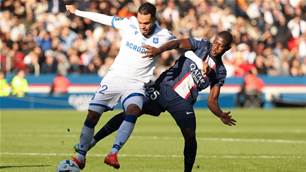EXCLUSIVE: Former A-League assistant coach Arthur Papas has joined Australian FourFourTwo to tear apart the tactics behind the results in our fabulous new feature, The Breakdown.
Having followed the tactical evolution of the A-League from abroad this season, one interesting development has been the open dialogue expressed by club hierarchy in identifying and then producing a football style based on trends that have become a cornerstone of successful teams of recent times. I am all for this type of dialogue on the basis that it remains consistent, part of a long-term vision and the club has recruited players with the characteristics to effectively execute this style of play.
One interesting case is Wellington Phoenix who seem to be in the midst of such a change albeit during the season. I have always admired the work of Ricki Herbert over the years and when we faced Wellington, one certainty was that you better have prepared to face an honest, hard working team with a simplistic yet very effective style of play.
However, after watching the match against Brisbane Roar on Sunday, this sudden shift in playing style is for the moment causing confusion in key areas tactically. Of course, during the season is always a difficult time to completely overhaul the playing style because the bulk of tactical ideas have been developed in detail from the beginning of the season through the tactical periodisation program which systematically develops the facets of your team style as part of a process.
Wellington's current situation reminds me of a similar situation I found myself in during 2012 upon taking over as the Indian U22 National Team Coach. I was entrusted with a team that had only ever known of a 1-4-4-2 throughout its entire development, had never entertained building up from the goalkeeper, keeping the ball on the ground and using passing as a means to controlling matches and was ranked the lowest in a group which had the likes of Iraq, UAE amongst others. My objectives were on introducing a 1-4-3-3 based on very different football principles and style and upon introduction, I detailed these objectives to the playing group and the look on their face left me in no uncertainty of the enormity of the task. Oh, and I had 17 days to integrate all these changes before the tournament began...
This is why in essence I can relate to the case of Phoenix.
For the purpose of this piece though I will specifically look at one tactical adjustment that can be developed in the short term to an effective level. It concerns the functionality of the Phoenix midfield and where with some improvements in positional understanding Phoenix could still make a late play for the finals. This is only one sub-topic within the way a midfield can improve its functionality but a vital one at that.
One striking element of the Wellington midfield on Sunday relative to this topic was the positioning of the midfielders during the majority of ball possession phases during the build up. More often than not, they ended up in a situation where all the midfielders were placed on the ball side of the half vertically (see the pic above). One of the ways this negatively impacted the team when trying to build up was that there was no outlet on the opposite side and a reduction in the space available if the objective was to play through the midfield. It reached the critical stage where the second goal conceded was a result of turning the ball over in the build-up when trying to play through a very compacted midfield
Based on the understanding that every action your team makes provokes a reaction from your opponent, you begin to understand the reaction Wellington received from Brisbane who were once renowned for their aggressive pressing. What eventuated was that it became much easier for Roar to press both the ball carrier as well as the closest players to the ball carrier because the space was decreased due to the poor positioning of the Wellington midfield in the build up phase.
On too many occasions either the midfield was sitting on top of the centrebacks when they were in ball possession - inviting extra pressure close to their own goals -- or they were standing too close to each other, inviting smaller spaces for the opponent to have to press, or on the flipside when the ball bypassed them to the forwards, the distances were now too great to support in higher positions - all this purely based on midfield positioning and utilising space.
You can relate this concept of utilising the space to a team training exercise of 6 v 3 played over a half pitch compared to the same 6 v 3 playing in a 15 x 15 meter grid with the aim being to maintain ball possession. I am exaggerating the task to provide a clear example, but this exercise would demonstrate that the team who plays over the bigger space will more than likely be able to maintain the ball for longer periods because the group of three players would have much more difficulty collectively pressing in the bigger space. Increasing the spatial capacity relative to each midfielder’s position would have increased the level of difficulty for Roar to press collectively.
A past colleague of mine once remarked on how he viewed the midfield function of his teams in the same way the physiologist dissects the human heart functioning during exercise. It made a lot of sense because as humans we require the heart to pump blood to the body to constantly function at an optimum level. It works in the same way in a team because, when the midfield is not functioning correctly, all areas connected to it decrease their level of functionality.
It would seem that right now the Wellington midfield has reached a critical stage where it needs be resuscitated before it is lights out for 2012/13…
Arthur Papas
Indian U23 National Team Coach and Former A-League Assistant Coach
Related Articles

EXCLUSIVE: Brimmer, Rojas headline Auckland A-League swoops

City land marauding Moroccan as Bereneguer opts for Brisbane













